The Everglades is a subtropical and tropical wetland spanning 7,800 square miles (20,000 km2) in central and south Florida in the United States. Water from the Kissimmee River south of Orlando feeds into Lake Okeechobee and then continues south into Florida Bay. Although mostly marsh and flooded grassland the Everglades also run through cypress swamps, hardwood hammocks, pinelands, coastal prairies, and mangrove forests.
Classification: Fish
Silky Shark (Wild Safari Sealife by Safari Ltd.)

The silky shark (Carcharhinus falciformis) is a species of requiem shark found in tropical and subtropical seas around the world. They inhabit the epipelagic zone near continental shelves and deepwater reefs where they feed on bony fishes, cephalopods, and the occasional crustacean. They are known to be active and inquisitive and are considered potentially dangerous to humans but given their preferred habitat, encounters are rare.
Laugh and Grow Fat Sea Animals Series 1 (Animal Heavenly Body)
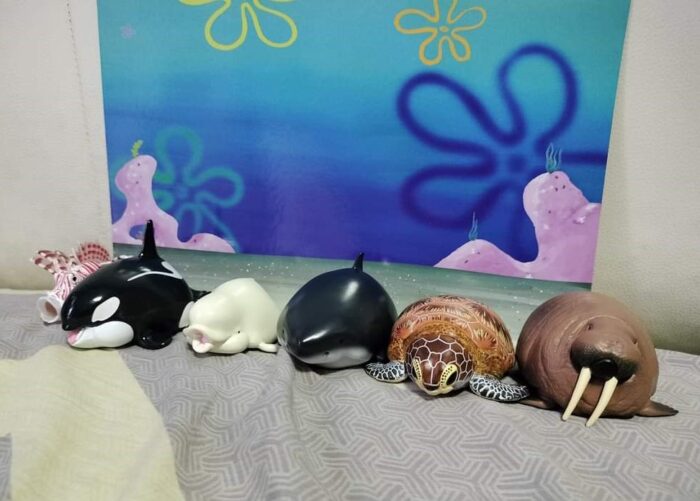
Review and images by JimoAi; edited by bmathison1972
Happy Shark Week! For a change, instead of reviewing a shark for this year, I will be reviewing a selected group of sea animals with a shark included, of course.
An introduction to Animal Heavenly Body. They are a Chinese company, akin to a mix of PNSO and Haolonggood with a hint of Popmart, which focuses on modern animals with some stylized features with them.
Sawfish (Monterey Bay Aquarium Collection by Safari Ltd.)
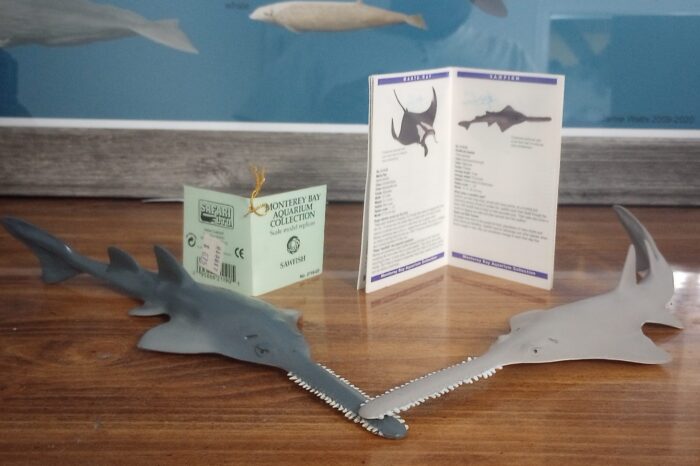
Not to be conflated with sawsharks, sawfish are a family of rays belonging to the Pristidae family. This family is distinguished by an elongated rostrum. This “saw” is equipped with specialized external “teeth” and sensory structures to aid in electroreception and prey capture. Sawfish share ancestral affinities with the guitarfish. Currently, five species across two genera are recognized.
Japanese Sawshark (8PCS Shark Toys by Toymany)
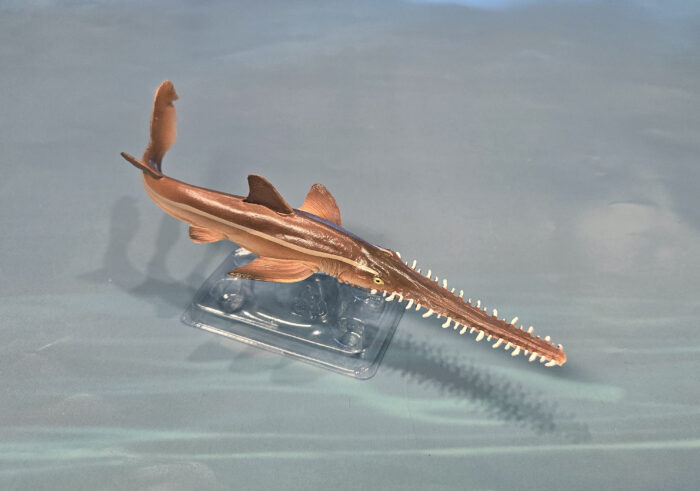
Sawsharks, which are in the family Pristiophoridae, should not be confused with sawfish of the family Pristidae. Sawsharks, as their name implies, are ‘true’ sharks within the Selachimorpha, whereas sawfish are rays within Batoidea. Sawsharks are squalimorph sharks, and are more closely related to lantern sharks, sleeper sharks, angel sharks, and dogfish than they are to more familiar taxa such as great whites, tiger sharks, whale sharks, and hammerheads.
Pyjama Shark (Return to Isle of Jaws by Discovery Science)
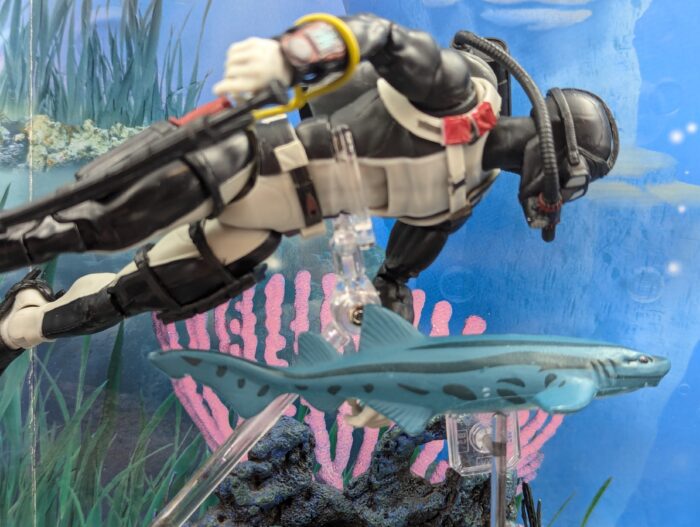
Hard to believe it’s already Shark Week again! And while I don’t usually follow the TV version, it’s always a good time to pull out something shark related from the collection and celebrate this awesome group of animals. For my contribution, I am going to look at a figure from a Discovery Science set called Return to Isle of Jaws that was made in conjunction with a Shark Week show of the same name.
Spotted Wobbegong (Coral Reef Diver Set by Schleich)
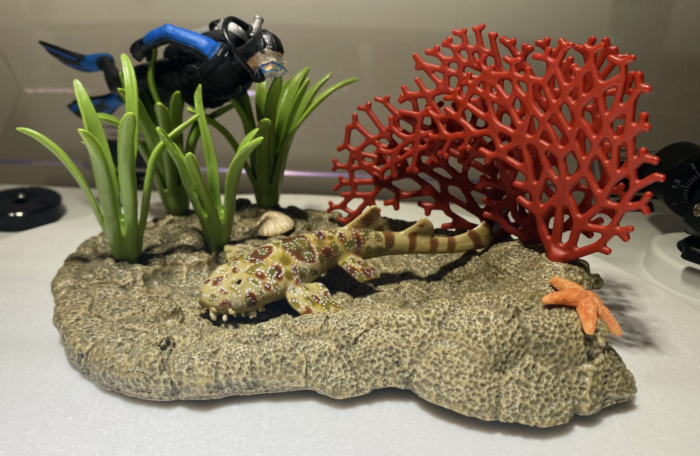
Review and images by Alopias superciliosus; edited by bmathison1972
I’m happy to be returning for my second Shark Week; always a pleasure to nerd about obscure sharks! For this year’s installment we are going as far away geographically from my Greenland Shark review last year as possible, “down under” to discuss the weird and wonderful Spotted Wobbegong, Orectolobus maculatus.
Port Jackson Shark (Larami Sharks by Larami)
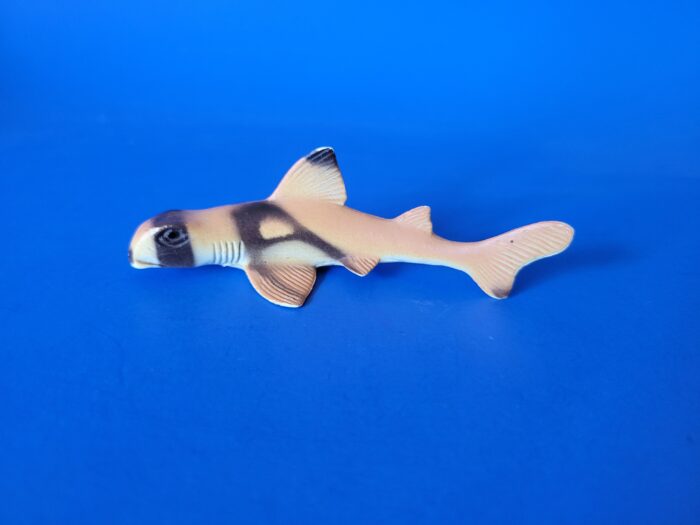
Welcome to Shark Week on the blog! This week we have themed posts for anyone who enjoys the finned world of the ocean- the finned world with teeth! To kick off the week I have the first submission: for the Port Jackson shark.
The Larami Port Jackson Shark was released in 1993 as part of a series of shark models that included common species like the bull, great white, and tiger sharks, but also includes several rare species in toy form such as the sand tiger shark, swellshark, greenland shark, and bonnethead shark.
Asian Arowana (Monster Fish by Takara Tomy A.R.T.S.)
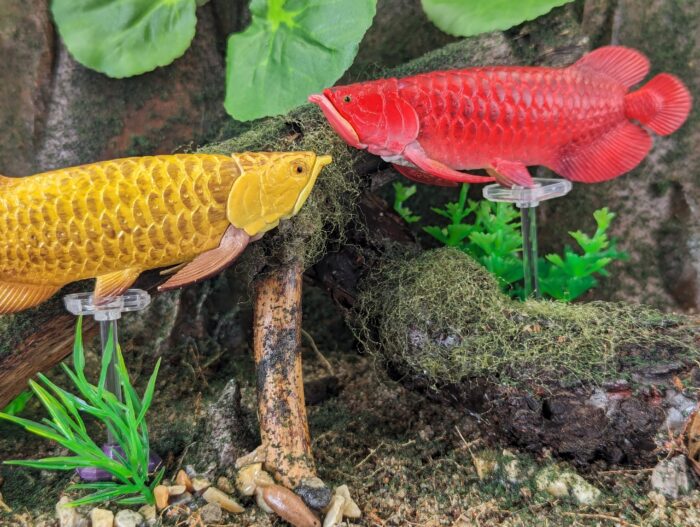
After recently discussing some Takara figures from a Monster Fish set (…the Fishing Wars) I thought I’d go into some others. So I am looking at the pair of Asian arowana figures from an earlier Takara Tomy series…also called Monster Fish (!?) but not fishing themed I guess? In fact the theme is pretty loose (the other two figures are deep sea fish…) I don’t actually have those other two, but I do like bonytongue figures.
Alligator Gar (Mini Ancient Fish Series 1 by Bandai)
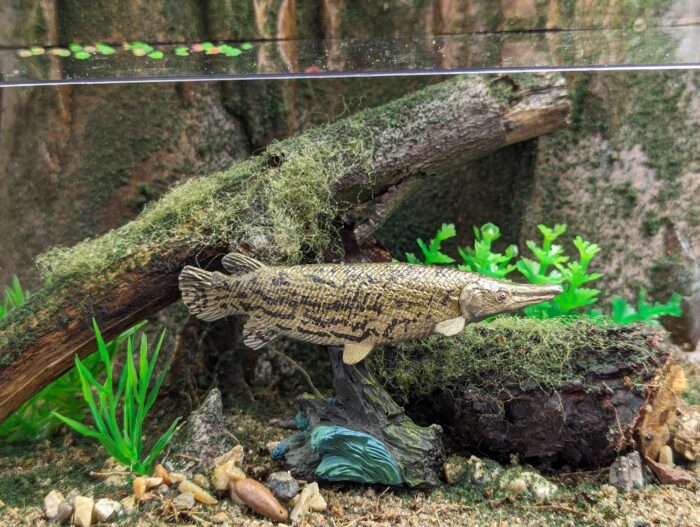
Back with another Bandai ‘Mini Ancient Fish’ model, but this time from series 1. As it is, it’s the only figure I have from this particular set, but it went without saying that I would add another alligator gar Atractosteus spatula to the collection! Like the more recent Series 2 (of which I have the whole set and have already discussed) the hallmarks of the series were there in the first series.
Electric Eel (Dangerous Creatures by Takara Tomy A.R.T.S.)
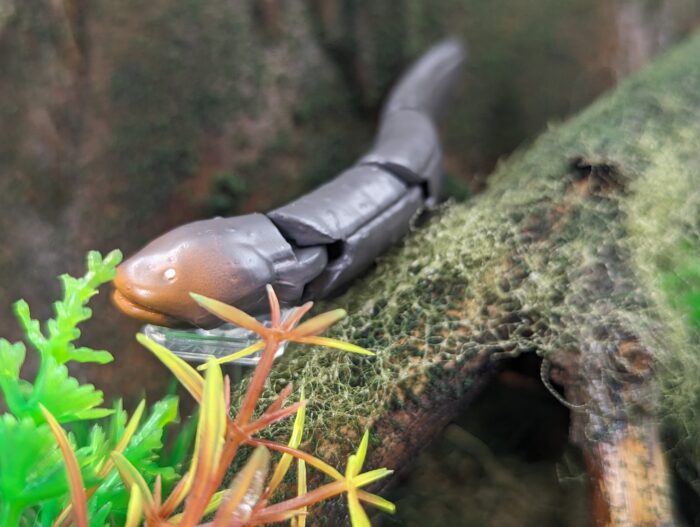
Back again with another fish from Takara, from yet another series. This one is the electric eel Electrophorus electricus (probably…a few species were separated from E. electricus in 2019, but this is the most likely species for the figure based on appearance and general familiarity). As the set name implies, it featured animals that shared the characteristic of being dangerous (to people).
Chinese Sturgeon (Mini Ancient Fish Series 2 by Bandai)
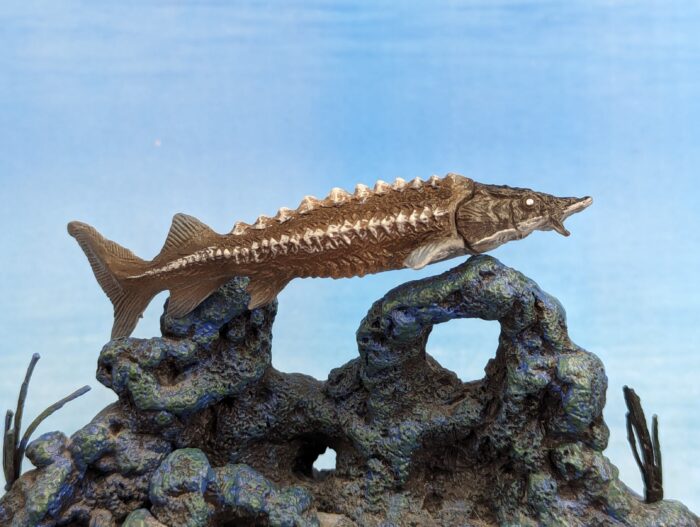
This figure represents the fifth and final model in the Mini Ancient Fish series 2 from Bandai. In this case, it a fish well-known as ‘ancient’, a Chinese sturgeon Acipenser sinensis. Sturgeons are well known as primitive fish, with the order Acipenseriformes represented in the Jurassic, and the earliest member of the sturgeon family Acipenseridae being known from the late Cretaceous, included in the same genus Acipenser (although it is believed that this genus is paraphyletic–so the taxonomy could change).




